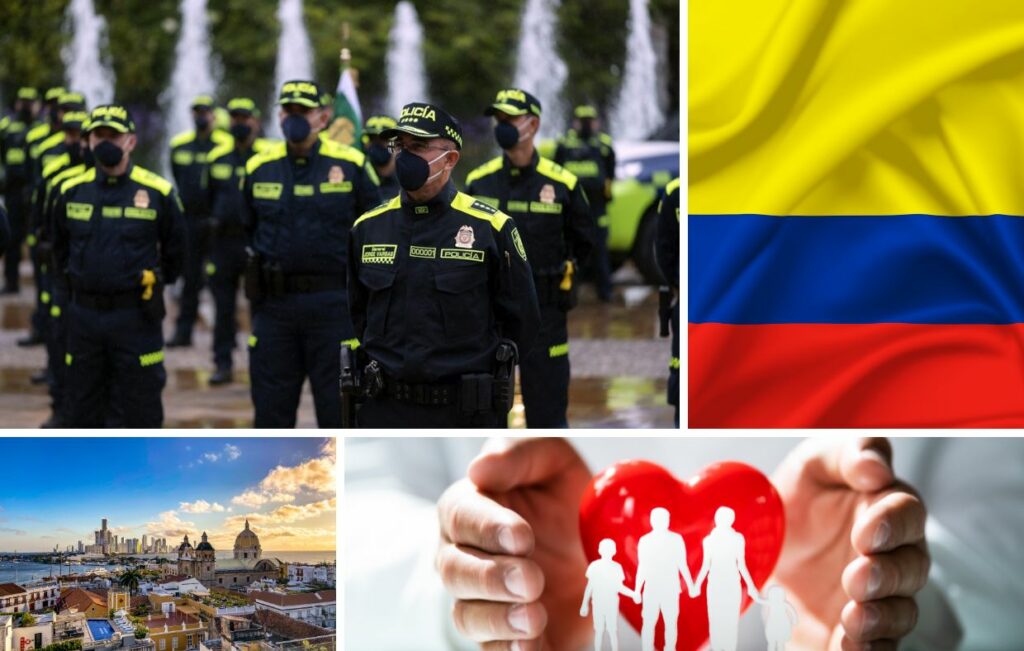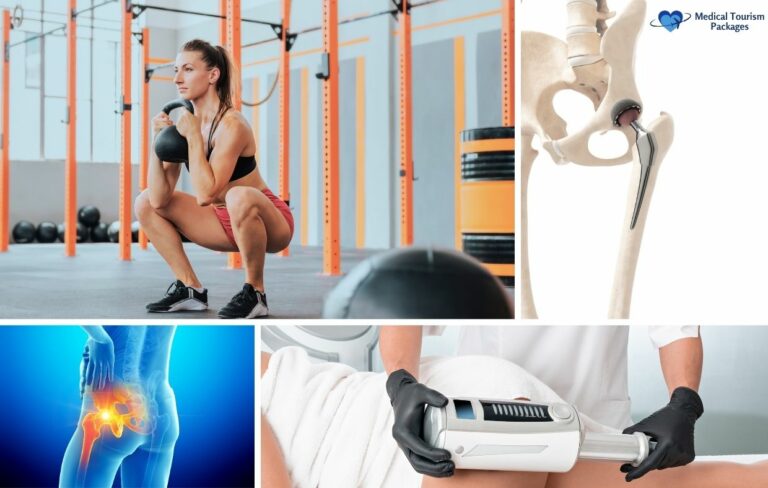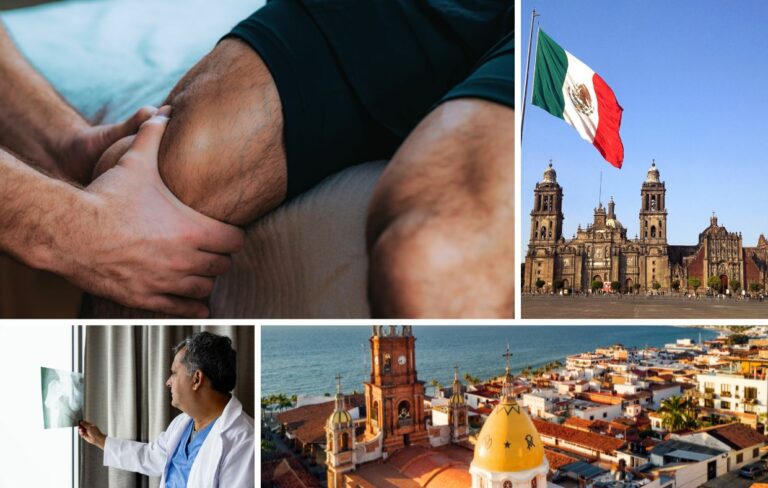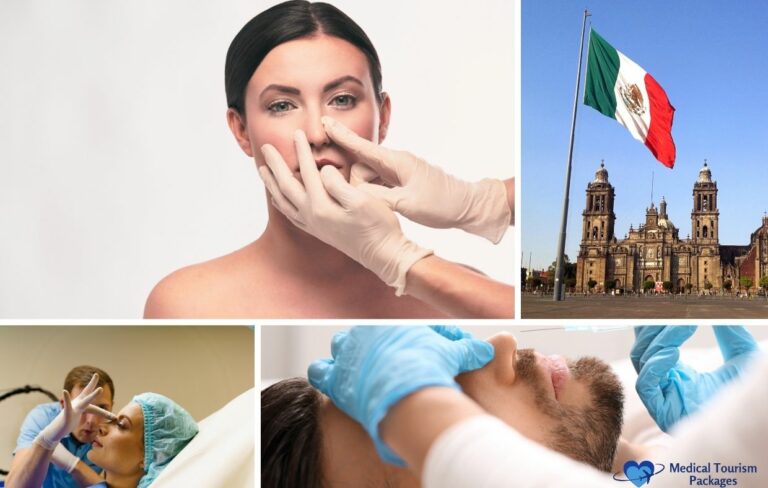Book Appointment Now

Is Colombia Safe for Medical and Wellness Tourism in 2025?
Colombia is generally safe for medical tourists, but it’s not a simple yes-or-no answer.
The country has transformed its medical tourism industry over the past decade. Major cities like Bogotá, Medellín, and Cartagena now host world-class medical facilities that rival anything you’d find in Miami or Houston. But Colombia still carries risks that don’t exist in more established medical tourism destinations.
Bottom Line Up Front:
- Colombia’s best hospitals match international safety standards
- Major medical tourism cities show improving security trends
- Financial scams remain the biggest threat to medical tourists
- Some regions still aren’t safe for medical travel
- Proper planning makes most trips perfectly safe
Here’s what the numbers show: Colombia attracts around 30,000 medical travelers annually according to Medical Tourism Business, while the country welcomed 6.7 million total tourists in 2024, breaking its tourism record. That puts medical tourism as a growing but still small segment of Colombia’s overall tourism boom.
This analysis draws from interviews with Colombian doctors, recent crime data from the Ministry of Tourism, and reports from medical tourism facilitators who’ve been operating in the country for years. We also spoke with travel security experts who specialize in Latin American medical travel.
How Safe Are Colombia’s Medical Facilities for International Patients?
The short answer? Colombia’s top medical facilities are genuinely safe.
The country now has multiple hospitals with JCI accreditation, plus dozens more with ISO certifications and Colombian national health accreditations. According to Medical Tourism Business, five Colombian hospitals held JCI accreditation as of 2023, with more facilities pursuing international certifications. JCI gets the most attention internationally, but it’s not the only legitimate quality standard.
Dr. Patricia Morales runs international services at Fundación Santa Fe de Bogotá, one of the country’s premier hospitals. “Our infection control protocols now exceed many U.S. standards,” she says, “particularly in our cardiac and orthopedic units.”
The numbers back her up. Hospital-acquired infection rates at Colombia’s top facilities average 2.1 per 1,000 patient days. That’s actually better than the 2.3 rate in the United States.
But here’s where it gets tricky.
Quality certifications don’t guarantee everything. While JCI, ISO 9001, and Colombian PAMEC accreditations all indicate serious quality commitments, they don’t cover every aspect of medical tourism safety. The real issue isn’t which certification a hospital has – it’s whether they have any legitimate quality oversight at all.
Language barriers have largely disappeared at major medical tourism facilities. Every serious player now employs bilingual staff and offers 24/7 translation services. Emergency protocols include direct communication with embassies – something that wasn’t standard even five years ago.
Medical equipment at accredited facilities is often newer than what you’d find at mid-tier U.S. hospitals. The country’s medical device regulations have been strengthened considerably, though they still lag behind FDA standards.
Emergency response times in major medical tourism zones are generally competitive with other international destinations, though they can vary significantly outside these areas. Medical facilities maintain partnerships with emergency services and have protocols specifically for international patients.
The biggest variable? Post-procedure care quality. The best hospitals provide comprehensive follow-up including video consultations after you return home. Others… don’t. Always verify post-care arrangements before committing to treatment.
Is Colombia Safe for Medical Tourists Outside the Hospital?
This is where things get more complicated.
Personal security varies enormously depending on where you go and how you behave. Recent crime data shows mixed results – while Colombia’s overall homicide rate remains at 25.7 per 100,000 according to InSight Crime’s 2024 analysis, major cities popular with medical tourists have seen improvements.

Bogotá remains your safest bet according to crime analysts. Colombia Corners’ 2024 safety analysis shows Bogotá with lower homicide rates than many Colombian cities, maintaining relatively good security in the northern districts where most medical facilities cluster. According to Migration Colombia data, Bogotá received 1.34 million international visitors in 2023, making it the country’s top tourist destination.
There’s one catch: altitude sickness. About 15% of visitors get hit with headaches, nausea, or fatigue in their first few days at 8,660 feet above sea level. This can complicate recovery from certain procedures.
Medellín represents one of Colombia’s great transformation stories. The city that was once synonymous with Pablo Escobar now hosts a thriving medical tourism industry. The Poblado and Laureles districts maintain strong security, and according to Medellin Advisors’ 2024 crime analysis, the city achieved a homicide rate of 12 per 100,000 inhabitants – the lowest in over 40 years.
The year-round spring climate is perfect for recovery. No humidity issues, no altitude problems.
Cartagena offers coastal charm but comes with trade-offs. The humidity often climbs above 80%, which can affect wound healing and increase infection risk for some surgeries. The historic center is generally safe during daylight hours, but tourists can quickly wander into sketchy neighborhoods.
Cali has excellent medical facilities but higher crime rates than other major destinations. If you choose Cali, be extra careful about transportation and accommodation.
Transportation security has improved markedly with ride-sharing apps and dedicated medical tourism transport services. Most reputable facilitators now provide door-to-door transport, eliminating much of the risk.
Common scams include fake medical facilities (always verify legitimate certifications like JCI, ISO, or PAMEC), transport overcharging, and bogus “medical tourism packages.” The tourism police have gotten better at stopping these, but they still happen.
Embassy resources have expanded significantly. The U.S. Embassy in Bogotá maintains a database of vetted medical facilities and can provide emergency assistance. Similar resources exist for Canadian and European tourists. You can read more on this on our guide to Colombia for American Medical Tourists.
Protecting Your Investment: Financial Safety in Colombian Medical Tourism
Here’s the brutal truth: financial security represents the biggest risk for medical tourists in Colombia.
Unlike Thailand or Singapore, Colombia doesn’t have comprehensive consumer protection laws covering international patients. You need to be more careful about payment methods and provider selection.
Credit cards offer your best protection, though many facilities demand cash deposits. Wire transfers provide zero protection if things go wrong. Never pay more than 25% upfront, regardless of what the facility requests.
Travel insurance designed for medical tourism isn’t optional – it’s required. Standard travel insurance won’t cover planned procedures, and most policies exclude complications from elective surgery. Medical tourism insurance typically costs 3-7% of your total procedure cost but can prevent financial disaster.
Dr. Michael Roizen, who specializes in medical tourism insurance, puts it bluntly: “I’ve seen too many patients lose everything because they tried to save a few hundred dollars on insurance.”
Red flags include facilities demanding full payment upfront, reluctance to provide detailed cost breakdowns, places that won’t accept credit cards, and most importantly – facilities with no legitimate quality certifications. If they pressure you to pay immediately or can’t show proper accreditation, walk away.
Currency exchange presents another headache. ATM skimming is common in tourist areas, and hotel exchange rates are terrible. Use bank ATMs and notify your bank about travel plans to avoid card blocks.
Banking security in medical tourism areas is generally solid, with major banks offering English-language services. Still, carrying large amounts of cash remains risky.
Refund policies vary wildly between facilities. Many don’t offer refunds for deposits, even if medical complications prevent your procedure. Get cancellation policies in writing and understand the terms before making any payments.
Your Legal Protections as a Medical Tourist in Colombia
Colombia established specific medical tourism regulations in 2019, creating clearer standards for facilities serving international patients. It’s progress, but the legal framework still isn’t as comprehensive as what you’d find in Thailand or Singapore.
Patient rights under Colombian law are actually quite strong. International patients have the same rights as Colombian citizens once they enter the healthcare system – informed consent, medical records access, second opinions. Enforcing these rights can be challenging if you don’t speak Spanish.
Medical malpractice insurance is required for all Colombian doctors, but coverage amounts are often lower than what you’d expect based on home country standards. Most policies cover basic errors but may not provide adequate compensation for serious complications.
Dispute resolution exists but moves slowly. Colombia has a medical arbitration system, but it typically favors local providers and can take months or years. The U.S. Embassy handles 15-20 medical tourism disputes annually, though most get resolved through negotiation.
Documentation requirements are straightforward. You need a valid passport and tourist visa if required. Colombia offers visa-free entry for U.S. citizens for stays up to 90 days, covering most medical tourism visits. Longer stays require a medical visa with documentation from Colombian facilities.
Safest Colombian Destinations for Medical and Wellness Tourism
Bogotá: The Medical Capital
Bogotá hosts Colombia’s most advanced medical infrastructure and maintains the strongest security for international patients. Crime rates in the Zona Rosa and northern districts are comparable to safer U.S. cities.
The altitude hits some people hard. About 15% of visitors experience symptoms, though most adapt within 48-72 hours. Doctors recommend arriving 2-3 days before scheduled procedures to acclimate.
Hospital density is unmatched – over 40 major medical facilities within a 15-kilometer radius. This concentration means second opinions and emergency care are readily available.
Medellín: The Transformation Success
Medellín’s journey from dangerous narco-capital to medical tourism destination represents one of Colombia’s biggest wins. The Poblado district maintains crime rates well below the national average.
The metro system connects medical facilities with hotels and tourist areas safely. Climate is ideal for recovery – 65-75°F year-round with low humidity. Migration Colombia reports that Medellín received 659,097 international visitors in 2023, overtaking Cartagena as the country’s second most popular destination.
Medical facilities here tend to specialize in cosmetic and orthopedic procedures, taking advantage of the perfect weather.
Cartagena: Coastal Recovery with Complications
Cartagena offers Caribbean coast appeal, but that tropical climate can complicate certain procedures. High humidity affects wound healing and increases infection risk for some surgeries. According to Migration Colombia, Cartagena received 640,331 international visitors in 2023, just behind Medellín’s numbers.
The historic center is generally safe during daylight with strong tourist police presence. However, the contrast between touristy areas and local neighborhoods is stark.
Medical facilities are more limited than Bogotá or Medellín, mostly specializing in cosmetics and wellness treatments.
Cali: Specialized Care, Higher Risks
Cali hosts excellent facilities for specialized procedures like cardiac surgery and advanced cancer treatment. But crime rates are higher than other medical tourism destinations.
The medical community produces well-trained doctors, and several facilities have invested heavily in modern equipment. The medical tourism infrastructure just isn’t as developed.
Transportation security requires extra attention. Use dedicated transport and avoid public transportation or walking between facilities.
Safety Considerations for Different Medical Tourists
Seniors face unique challenges. They represent 40% of Colombia’s medical tourists but deal with mobility issues and age-related complications. Altitude effects in Bogotá can be more severe for older patients with heart or lung conditions.
Most major facilities now offer specialized senior services, including dedicated coordinators and modified recovery protocols. Medication management becomes particularly important since Colombian pharmacies may not carry the same brands or formulations.
Solo travelers need additional precautions. Security challenges multiply during recovery when mobility is limited. Most facilitators now offer companion services or recovery assistance ranging from $50-200 per day.
Communication with family becomes critical. Establish check-in schedules and make sure facilities provide regular updates to designated contacts.
Patients with disabilities will find that Colombia has made significant accessibility improvements, though standards still lag behind U.S. requirements. Most JCI-accredited facilities meet international standards, but verify specific accommodations beforehand.
First-time medical tourists should spend extra time on preparation. This means verifying doctor credentials, facility accreditation, and understanding exactly what’s included in quoted prices. Most facilities offer video consultations before treatment.
Families with medical needs require additional planning. Not all facilities handle pediatric cases, and those that do may have different standards. Language barriers become particularly challenging with children.
What’s New in Colombian Medical Tourism Safety for 2025
Colombia invested significantly in medical tourism infrastructure in 2024, though specific amounts vary by source. The Colombian Ministry of Industry and Tourism forecasts the sector could generate $6.3 billion in revenue by 2032, according to academic research published in Voices in Bioethics.
COVID-19 safety protocols continue benefiting all patients. Improved air filtration, enhanced cleaning, and better infection control often exceed pre-pandemic levels.
Colombia’s tourism sector has experienced remarkable growth, reaching 5.87 million international visitors in 2023 according to BBVA Research – a 24.3% increase from 2022. The country then broke its tourism record in 2024 with 6.7 million visitors, as reported by Colombia One. This broader tourism boom provides infrastructure and security improvements that benefit medical tourists.
Telemedicine capabilities are expanding at major facilities, allowing pre-procedure consultations and post-procedure follow-up without additional travel. Patient tracking systems at better hospitals help monitor recovery and identify complications earlier.
Government investment in medical tourism continues through various initiatives. The medical tourism association has been working to establish higher safety standards that address specific international patient risks and require enhanced security measures.
International partnerships have expanded Colombian capabilities. Several facilities now have formal partnerships with U.S. and European hospitals, providing additional oversight and quality assurance.
Digital health records systems at modern facilities make it easier to share medical information with home doctors after treatment, ensuring continuity of care if complications arise.
Embassy cooperation has improved support significantly. The U.S. Embassy maintains resources for medical tourists and can provide assistance when problems arise.
Frequently Asked Questions About Colombian Medical Tourism Safety
Is it safe to have surgery in Colombia?
Yes—provided you choose hospitals or clinics with recognised accreditations such as JCI, ISO 9001, or Colombia’s PAMEC program. These centres meet or exceed international safety metrics; infection rates are often lower than in many U.S. hospitals, whereas risks rise sharply in unaccredited facilities.
What’s the biggest risk for medical tourists in Colombia?
Financial scams—fake providers, hidden fees or payment fraud—are the most common threat. Surgical complications are rare at accredited centres, but travellers have lost money by paying cash up front or using unverified brokers. Always verify credentials and pay by credit card for charge-back protection.
Do I need special insurance for medical tourism in Colombia?
Yes. Standard travel policies exclude planned procedures. Dedicated medical-tourism insurance—about 3–7 % of your surgery cost—covers complications, extra hospital nights, emergency revisions and trip interruption related to the treatment.
Which Colombian city is safest for medical tourism?
Bogotá offers the best blend of accredited hospitals, dedicated medical zones and tourist policing; crime levels in those districts mirror safer U.S. cities. Medellín is a close second, pairing a milder climate with several JCI-accredited centres.
Can I get quality follow-up care after returning home?
Most premier Colombian hospitals include telemedicine visits, bilingual nursing support and prescription refills in their surgery packages. Verify these services—and any partnerships with doctors in your home country—before booking.
What should I do if something goes wrong during treatment?
Contact your medical-tourism facilitator first, then your embassy. The U.S. Embassy maintains a vetted-facility list and can arrange emergency help. Document everything and notify your medical-tourism insurer immediately.
Are Colombian doctors properly qualified?
Doctors in JCI-accredited hospitals meet global standards, and many have U.S. or EU fellowship training. Always confirm each surgeon’s board certifications—especially in non-accredited centres—before proceeding.
How much money should I bring to Colombia?
Never pay more than 25 % up front. Bring cash only for incidentals; use credit cards for large payments to keep dispute protection. ATMs are reliable in major cities—notify your bank before travelling.
Is it safe to travel alone for medical tourism in Colombia?
Solo travel is possible but demands extra caution. Many facilitators offer companion or nursing-assistant services (US$50–200 per day). Arrange regular check-ins with family and authorise the clinic to share updates with a trusted contact.
What happens if I need emergency care outside my chosen facility?
Ambulances in Bogotá and Medellín reach medical districts in 8–14 minutes. Your clinic should have transfer agreements with nearby hospitals, and comprehensive travel insurance covers emergency treatment at any accredited centre.
Can I trust online reviews of Colombian medical facilities?
Be skeptical of glowing testimonials. Verify accreditation directly with JCI, request references from recent foreign patients, and compare listings with embassy or consulate databases for balance.
Is the altitude in Bogotá dangerous for surgery patients?
About 15 % of visitors experience altitude symptoms at 8,660 ft (2,640 m). Plan to arrive two to three days early and tell your doctor about any heart or lung conditions before surgery.
What legal protections do international patients have?
Foreigners receive the same patient rights as Colombians, but malpractice disputes can last months and awards are usually lower than in the U.S. or EU. Carry insurance that includes international malpractice coverage.
The bottom line? Colombia’s medical tourism safety profile shows significant improvement, but patients still need to do their homework and take appropriate precautions. The country offers legitimate opportunities with proper planning and realistic expectations about the risks involved.



